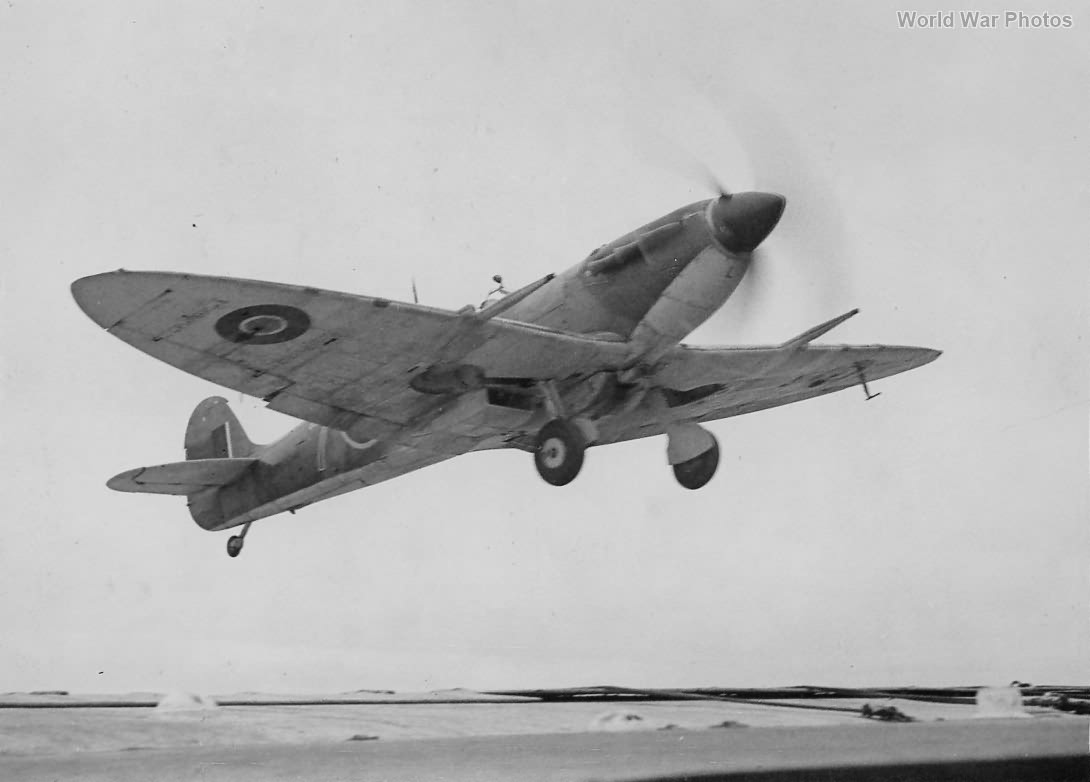The Seafire Mk Ib was viewed as a temporary solution until the Mk IIc – the first serious carrier-borne Seafire – could be produced. By July 1942, the slow delivery of the Mk Ib and delays in the development of other aircraft like the Firefly and Firebrand led the Admiralty to request 500 Spitfires from the Air Ministry. Due to high demand, including commitments to allies like Russia, the request was reduced to 267, with a minimum requirement of 234. The Air Ministry offered 50 Mk I/IIs and 114 Mk Vbs, all without arrestor hooks, and eventually agreed to deliver 10 aircraft per month starting in February 1943. They also promised 200 Mk Vbs modified to FAA requirements within six months.
A review of the FAA’s needs revealed that the Firefly and Firebrand designs were inadequate. Consequently, the Admiralty placed large orders for the Seafire, including a folding-wing version, and considered designs based on the Spitfire Mk VIII and the Griffon-powered Spitfire Mk IX. Westland Aircraft and Cunliffe-Owen were awarded contracts for 213 Mk IIcs in March 1942, with Supermarine also receiving an order for 202 Mk IIcs. Supermarine had a head start because they did not need to retool their production lines.
The Mk IIc had significant differences from the Mk Ib, using the Spitfire Mk Vc airframe. The fuselage was reinforced, especially around the catapult spools and the radio compartment, to handle the increased all-up weight. The undercarriage was strengthened and extended forward by two inches. The first prototype, AD371, was converted from a Mk Vc and sent to RAE Farnborough in February 1942. However, during its first catapult launch from HMS Illustrious, it crashed due to damage, necessitating repairs and reinforcing the fuselage and tail.
The first production Mk IIc, MA970, built by Supermarine, flew on May 28, 1942. Although the Admiralty initially wanted all four Hispano cannons in the “C” wing, weight constraints limited the armament to two cannons and four machine guns. The first Westland-produced Mk IIc, LR631, was completed in December 1942. The Merlin 45 engine used in these early Seafires was underperforming at the altitudes the FAA operated, so the Merlin 32 was adopted, providing better low-altitude performance and used a four-blade propeller. This variant was designated the L Mk IIc and also featured a Coffman starter, which replaced the trolley accumulator for starting.
There was also a clipped-wing version of the Seafire Mk IIc, designed for low-level operations, though it had handling difficulties, especially during landings. The first squadron to equip with the L Mk IIc was No. 807 Squadron, but it did not reach full strength until May 1943, partly due to a shortage of Merlin 32 engines.
Challenges with catapult launches on certain carriers were addressed with Rocket-Assisted Take-Off (RATO). Trials were conducted initially at Farnborough and later on HMS Chaser, using Seafires MB141 and MB307. Although MB141 was lost during the first test flight, MB307 continued the trials despite several issues, including fires caused by the rocket packs.
The final variant of the Mk IIc was the LR Mk IIc, a low-level photo-reconnaissance aircraft equipped with two F.24 cameras for vertical and oblique photography. The first conversion, MB194, was done by Heston Aircraft, which also handled the remaining conversions. The last Mk IIc, LR764, was produced in October 1943 and used for trials on the Mk III Seafire’s tail unit.
